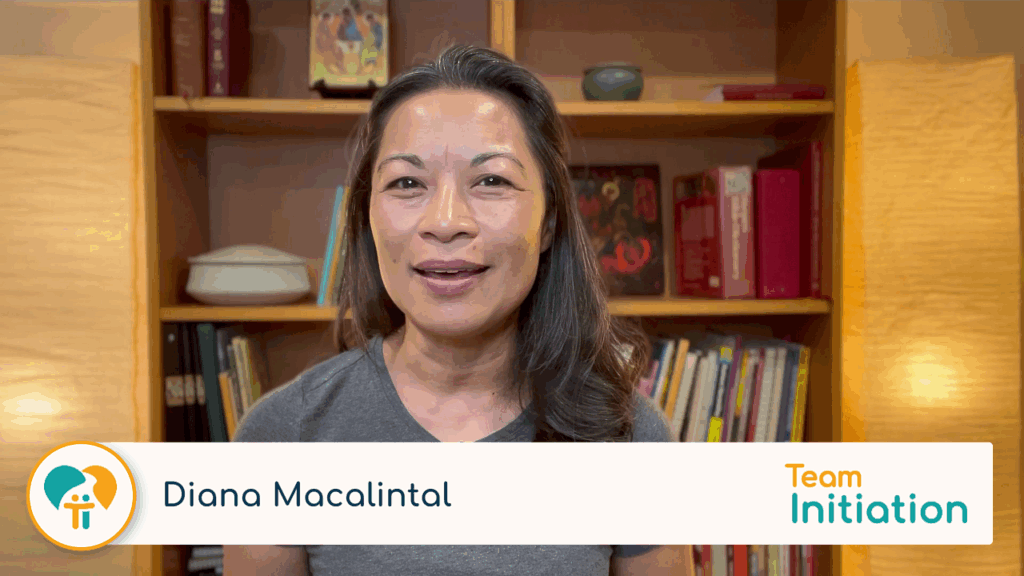 The Rite of Election is one of those “hinge” rites in the RCIA because it marks the transition from one period to the next for a person becoming baptized. But most people in your church won’t ever see a Rite of Election which usually takes place at the diocesan Cathedral. What most people will experience is the Rite of Sending, the optional rite that happens in the parish before the Rite of Election. The Rite of Sending has many of the elements of the Rite of Election, such as testimonies and giving of names. But the principal rite is the Rite of Election. It’s the highpoint of this part of the catechumen’s journey.
The Rite of Election is one of those “hinge” rites in the RCIA because it marks the transition from one period to the next for a person becoming baptized. But most people in your church won’t ever see a Rite of Election which usually takes place at the diocesan Cathedral. What most people will experience is the Rite of Sending, the optional rite that happens in the parish before the Rite of Election. The Rite of Sending has many of the elements of the Rite of Election, such as testimonies and giving of names. But the principal rite is the Rite of Election. It’s the highpoint of this part of the catechumen’s journey.
Help put the Rite of Sending in its appropriate place by catechizing your assembly from the symbols and actions of the Rite of Election. Even if they never see an actual Rite of Election, they will better appreciate this turning point for the catechumens. (BTW, unless your diocese says otherwise, anyone can go to the Rite of Election. So make a point of letting your assemblies know when your catechumens’ Rite of Election will be and invite them to come.)
Below is the unformatted text from a PDF bulletin insert that you can download, print, and copy for FREE for use in your parishes to help you catechize your assemblies about the discernment process. Please include the author and copyright information on any copies you make.
 Get the fully-formatted ready-to-copy bulletin insert (pdf) here.
Get the fully-formatted ready-to-copy bulletin insert (pdf) here.
Rite of Christian Initiation of Adults
Rite of Election
Chosen by God by Diana Macalintal
© 2008, Team RCIA.
All rights reserved. Witnessing God at Work
Our country knows a lot about elections. Each year, we’re bombarded with candidates telling us why they would be the best choice for our vote. There’s a lot of self-promotion, but not a lot of testimony, at least not in the way the Church thinks of being elected.In the Bible, we hear many stories of God choosing a person or even an entire people. The Israelites were God’s “chosen people.” David, the shepherd, was chosen by God to be king of God’s people. The angel Gabriel brought Mary the news that she had found favor with God and had been chosen to be the mother of God’s Son. And of course, Jesus is called the Messiah, the “chosen one” of God.
It is God who chooses. God takes the initiative and claims a person or a people as his own. Yet God’s choice is always witnessed by another. God’s choice is witnessed by the Church, God’s own people. We know whom God has chosen because we can see God’s influence clearly in that person’s life. In that person, we see God at work.
Election begins with God and is witnessed by the Church. To be elected means to be chosen by God to be the way God wants to act in the world now. It is one way God continues to be present in our world, and it is how the Church continues to proclaim God’s faithful presence to his people today.
For reflection: When have you felt chosen? What were you chosen to do? Who testified on your behalf that you were the right choice? How did their testimony make you feel?
Chosen for Baptism
When an adult seeks to be baptized, the Church is always looking for signs in that person’s life of God at work. Here are some signs we look for: Does the person listen to God’s word and respond to it? Have they changed their way of life to match the way of life presented in the Gospel? Do they pray with the Church and do the things the Church does? Do they live a spirit of charity in their family and work life? Have they learned to sacrifice themselves for the good of others? When we see these signs in the person’s life, we can affirm that God has chosen them to be baptized.
This discernment, testimony, and election are formally ritualized in the Church’s ancient Rite of Election. This rite is the turning point for those who are seeking to be baptized. It is when their months and years of preparation take the final turn because the Church recognizes that God has chosen them to be baptized at the next Easter Vigil. This rite, which takes place at the beginning of Lent, propels them and the Church into the final preparations for the great Easter celebration. After they celebrate the Rite of Election, the catechumen’s baptismal preparation is less like catechesis and more like a retreat. It’s a bit like the time before a couple’s wedding when their concern is less about getting to know their soon-to-be spouse and more about preparing themselves to make this lifelong commitment.
The Rite of Election has several important symbols and actions that help to communicate the importance of this moment in the life of the Church. Let’s look at some of these symbols. If you get to participate in your diocese’s Rite of Election, watch for them.
For reflection: Have you ever prepared for a significant moment in your life? What were the days and weeks beforehand like? How was that time different from your everyday life?
Testimony of the Church
Before the Rite of Election, a parish decides who among their catechumens have shown the signs of readiness for baptism. These catechumens are then asked to choose one or two godparents who will be their lifelong companions in the Christian faith. These godparents go to the Cathedral with their catechumens for the Rite of Election. There, the godparents testify and swear before the Bishop that they have seen God at work in the lives of their companions and therefore they are ready to be initiated into the Church. The Church assembly affirms the godparents’ testimony, and the Bishop, on behalf of the Church, accepts the godparents’ witness.
Enrolling One’s Name
The Bishop then asks the catechumens if they are ready to accept God’s election of them as verified by the Church. If they are, they are then to give the Church their names.
Your name is very important. God has called each person by name, and the Catechism of the Catholic Church says “the name is the icon of the person” (2158). Your name is sacred. When you give your name, you are giving your life. Those deemed ready to celebrate baptism are asked to give their life to God by giving their name to the Church for enrollment in the list of God’s chosen ones. These names are inscribed into a book called the Book of the Elect. Sometimes, the godparents will also put their name in the Book of Elect next to their companion’s name as a kind of “surety” or endorsement. These names and books are presented at the Rite of Election.
For reflection: What does your name mean to you? Do you know how you got your name? Have you ever put your name on something important?
Act of Election
Having received the catechumens’ names, the Bishop makes a powerful proclamation: “I now declare you to be members of the elect, to be initiated into the sacred mysteries at the next Easter Vigil.” This Act of Election officially gives the catechumens a new name. From then until their baptism at Easter, they will be known as the Elect. They are the ones of whom we speak before Communion: “Happy are those who are called to his supper.” The Elect are those called by God to be his own, to be washed in the waters of baptism, anointed by the Spirit in confirmation, and nourished by Christ in the Eucharist.
Handing Over to the Godparents
This is a very subtle but important part of the Rite. The Bishop asks the godparents to place their hands on the shoulders of their Elect. This gesture shows that the Elect are now in their care. The Bishop tells the godparents that they are to support them by their love and example, especially during these final days before Easter. As their first act of care for them, the Church prays for the Elect in intercessions and a final prayer.
For reflection: Who are your godparents? How have they supported you in your faith? Are you a godparent for someone? How can you help the Elect strengthen their own faith?
All the baptized are God’s chosen people. In each of our lives, Christ continues his mission of bringing peace and light into the world. We do this in very simple ways—by living as Christ in our families and in all our daily interactions. The Elect are chosen not simply for baptism but for mission, Christ’s mission. The Elect are signs that God is still indeed with us, blessing our world and recreating it with his Spirit.
See also these related articles:
- Testify!
- Are your catechumens ready for the next stage?
- RCIA Discernment: How do you know if they know enough?
- Make the Book of the Elect worthy of the names it bears


















I think all catechumens should read this! Thank you for such great insight and help in understainding where we are on this great jurney into God’s kingdom.
Thank you so much and God bless,
curent Catechumen
Dear Larry,
Thanks for the good words! Blessings on your journey and the people walking it with you.
Diana
This is a great resource and like articles are necessary to raise awareness in our parishes and keep the catechmens in everyone’s prayers during their jounrey of faith
Looking forward to other inserts! Thanks
Hi Val,
I’m glad you found it helpful. Click on the resources button at the top of the page to find other handouts and inserts. Keep up all your great work!
–Nick
I am happy to see that this article has been made available for a bulletin insert. Whenever we have resources like this to put out into the assembly, it is such a powerful way of educating them as well as helping them to see their role in the initiation process.
Thank you!
This is always an oldie but a tremendous goodie! Thank you for giving us a bulletin insert to present to the faithful. Your words alone bring forth such powerful spiritual movements shown in the Rite of Election! As always, I constantly run back to you and your website for insightful, thoughtful, and reflective ideas and words. Thank you!